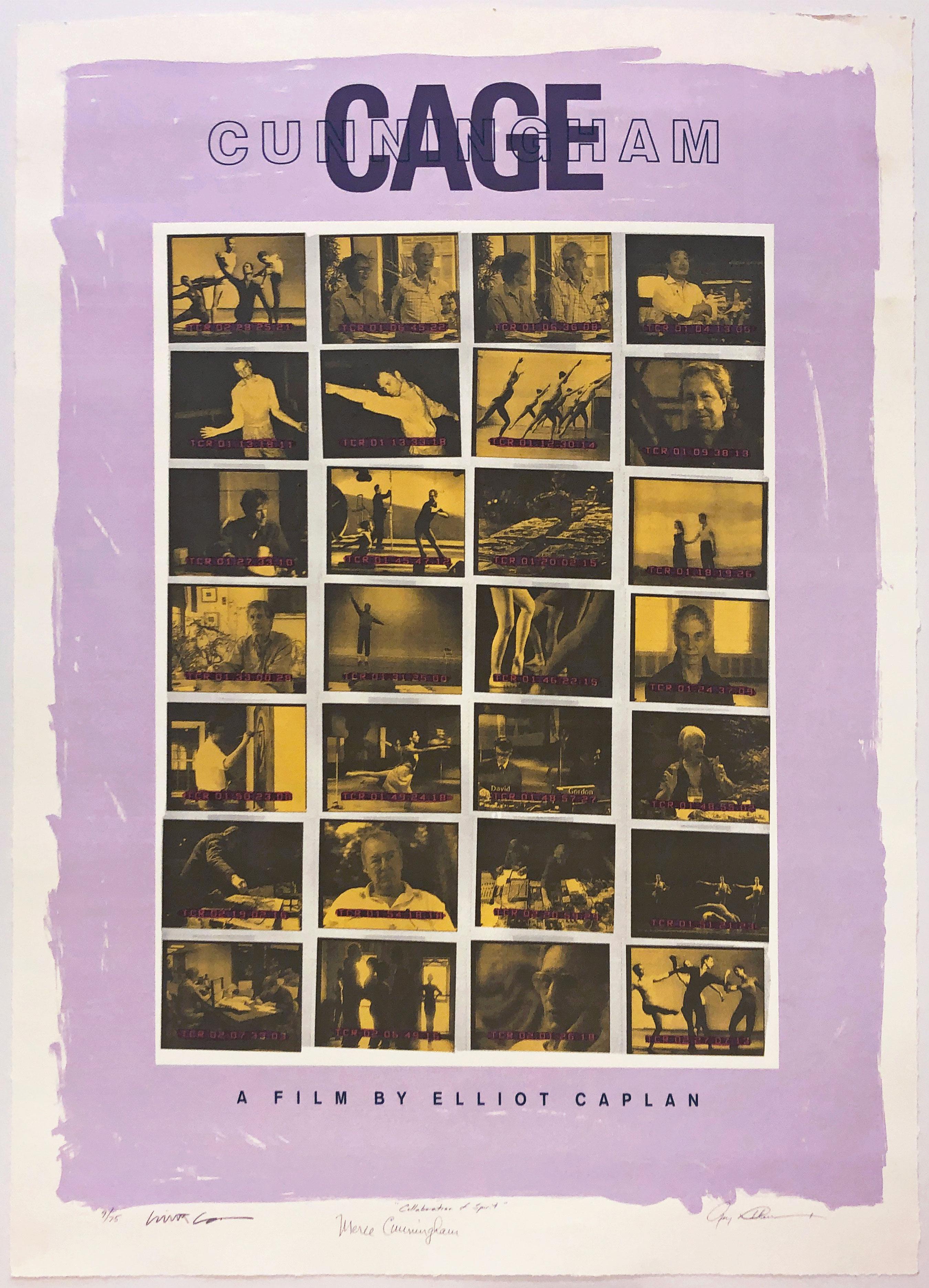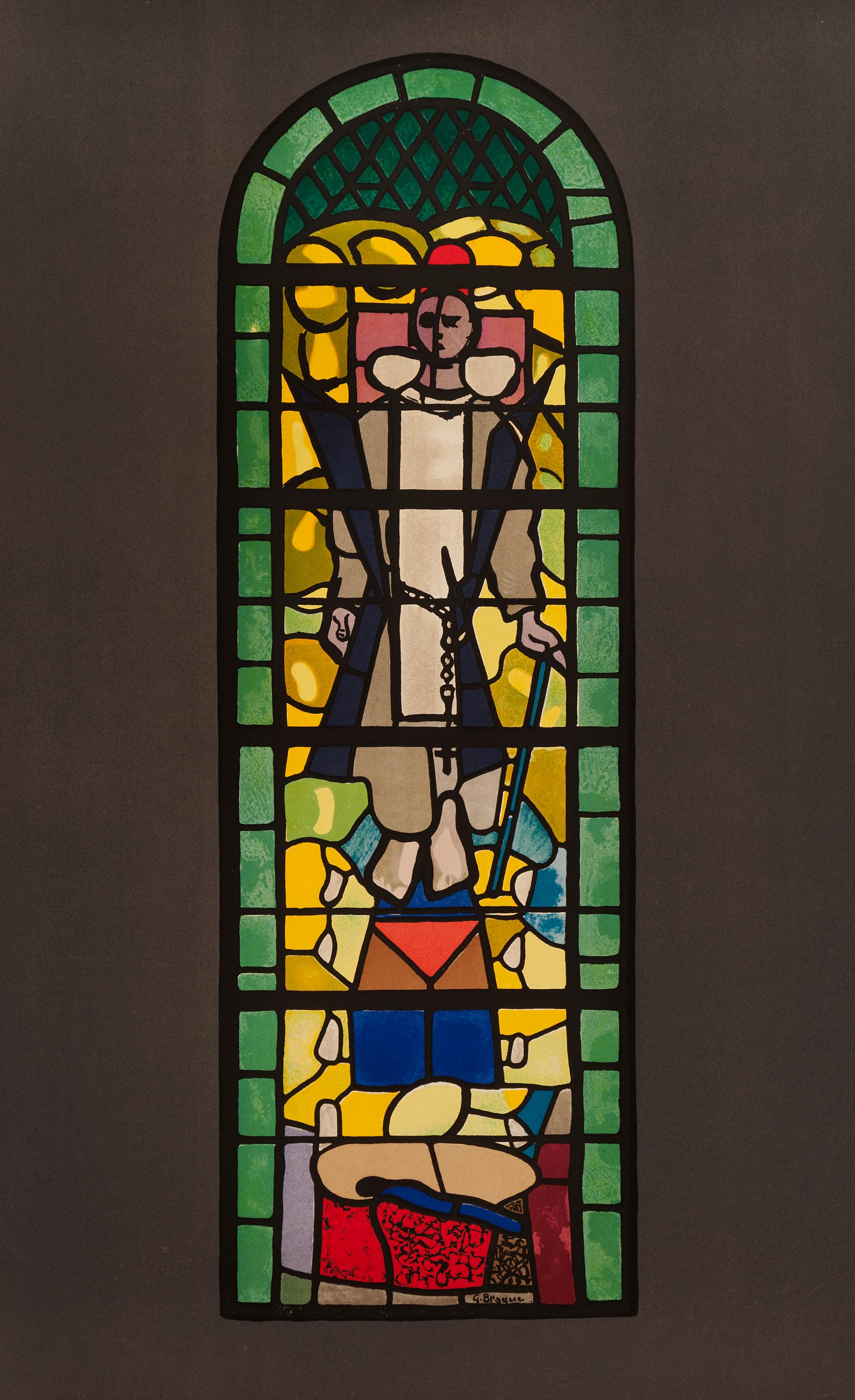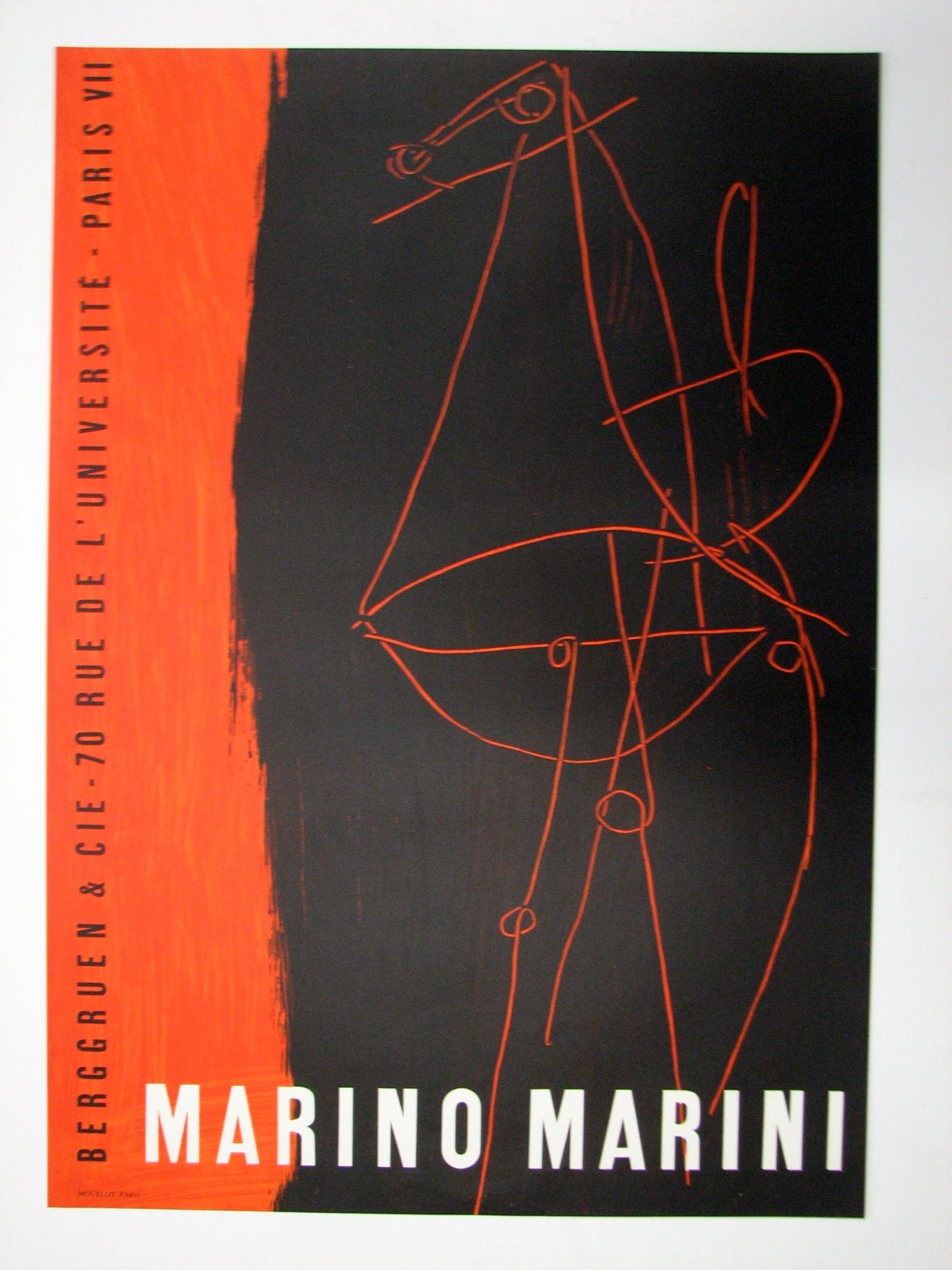Items Similar to Five Children
Want more images or videos?
Request additional images or videos from the seller
1 of 9
Giovanni VetereFive Childrenc.1980
c.1980
About the Item
Artist: Giovani Vetere (Italian, born 1940)
Title: Five Children
Year: Circa 1980
Medium: Color lithograph
Edition: Inscribed E.A (Epreuve d'Artiste) in pencil
Paper: Wove
Image size: 26 x 19.75 inches
Sheet size: 31.5 x 24 inches
Signature: Hand signed in pencil by the artist
Condition: Very good
Frame: Unframed
About the artist.
Vetere grew up without regular education in modest, rural conditions, which were characterized by rigor, church and tradition. In 1957 he went to Turin and in 1961 to Germany, where he first made a living as a factory worker in Bonn . A serious car accident in 1965 tied him to the hospital bed for months. Vetere used the time for further education and improved his German language. The birth of his daughter Carmen Clea in 1971 triggered a significant inner change that led Vetere to pursue a career as an artist the following year with the support of his wife. In 1973 his first exhibition took place in Troisdorf. In 1975 he founded his own gallery, in which he gave other artists a chance to present their works.
A central theme of his work are simple human figures with rounded heads, reminiscent of children's drawings. The recurring feature is the expressive "button eyes" and a small round mouth, arranged like the vertices of an isosceles triangle standing on top . With this simplified and reduced style he formulates his maxim "the childlike as the cradle of our culture".
Vetere is one of the most renowned European artists of the 20th and 21st centuries with his paintings, sculptures and frescoes after almost 40 years of creative work and a large number of exhibitions in Europe and the USA, as well as successes at Art Basel and Art Cologne. The work of Giovani Vetere is held in corporate and private collections worldwide.
- Creator:Giovanni Vetere (1940, Italian)
- Creation Year:c.1980
- Dimensions:Height: 31.5 in (80.01 cm)Width: 24 in (60.96 cm)Depth: 0.01 in (0.26 mm)
- Medium:
- Movement & Style:
- Period:
- Condition:
- Gallery Location:San Francisco, CA
- Reference Number:
About the Seller
5.0
Platinum Seller
These expertly vetted sellers are 1stDibs' most experienced sellers and are rated highest by our customers.
Established in 1999
1stDibs seller since 2017
683 sales on 1stDibs
Typical response time: 1 hour
- ShippingRetrieving quote...Ships From: San Francisco, CA
- Return PolicyA return for this item may be initiated within 7 days of delivery.
More From This SellerView All
- Counterpoint Gothic VILocated in San Francisco, CAThis work on paper is by Donald Farnsworth (1952-). It is titled Counterpoint Gothic VI. It measures 29.5 x 21 inches the sheet, 38.5 x 29.75 inches ...Category
1980s Modern More Prints
MaterialsPaper, Handmade Paper, Lithograph, Monotype
- "Mujer Con Sombrero" Large lithographBy Rufino TamayoLocated in San Francisco, CAThis artwork titled "Mujer Con Sombrero (Woman with Hat)" 1972 is a large original colors lithograph on Arches paper by renown Mexican artist Rufino Tamayo, 1899-1991. It is hand signed and numbered 81/100. in pencil by the artist. The artwork size 36.35 x 25.85 inches, sheet size is 37.25 x 26.25 inches, framed size is 52.25 x 40.5 inches. Published by Transworld Art, New York , Printed by Bank Street Atelier, New York. Referenced and pictured in the artist's catalogue raisonne by Pereda, plate #132 page 123. Custom framed in a wooden black and silver frame, with silver bevel and fabric matting. It is in excellent condition. Will provide the buyer with a certificate of authenticity from our gallery and photocopy of the pages related to this artwork from the artist's catalogue raisone. About the artist: A native of Oaxaca in Southern Mexico, Rufino Tamayo's father was a shoemaker, and his mother a seamstress. Some accounts state that he was descended from Zapotec Indians, but he was actually 'mestizo' - of mixed indigenous/European ancestry. (Santa Barbara Museum of Art). He began painting at age 11. Orphaned at the age of 12, Tamayo moved to Mexico City, where he was raised by his maternal aunt who owned a wholesale fruit business. In 1917, he entered the San Carlos Academy of Fine Arts, but left soon after to pursue independent study. Four years later, Tamayo was appointed the head designer of the department of ethnographic drawings at the National Museum of Archaeology in Mexico City. There he was surrounded by pre-Colombian objects, an aesthetic inspiration that would play a pivotal role in his life. In his own work, Tamayo integrated the forms and tones of pre-Columbian ceramics into his early still lives and portraits of Mexican men and women. In the early 1920s he also taught art classes in Mexico City's public schools. Despite his involvement in Mexican history, he did not subscribe to the idea of art as nationalistic propaganda. Modern Mexican art at that time was dominated by 'The Three Great Ones' : Diego Rivera, Jose Clemente Orozco, and David Alfaro Siqueros, but Tamayo began to be noted as someone 'new' and different' for his blending of the aesthetics of post Revolutionary Mexico with the vanguard artists of Europe and the United States. After the Mexican Revolution, he focused on creating his own identity in his work, expressing what he thought was the traditional Mexico, and refusing to follow the political trends of his contemporary artists. This caused some to see him as a 'traitor' to the political cause, and he felt it difficult to freely express himself in his art. As a result, he decided to leave Mexico in 1926 and move to New York, along with his friend, the composer Carlos Chavez. The first exhibition of Tamayo's work in the United States was held at the Weyhe Gallery, New York, in that same year. The show was successful, and Tamayo was praised for his 'authentic' status as a Mexican of 'indigenous heritage', and for his internationally appealing Modernist aesthetic. (Santa Barbara Museum of Art). Throughout the late thirties and early forties New York's Valentine Gallery gave him shows. For nine years, beginning in 1938, he taught at the Dalton School in New York. In 1929, some health problems led him to return to Mexico for treatment. While there he took a series of teaching jobs. During this period he became romantically involved with the artist Maria Izquierdo...Category
Mid-20th Century Modern Figurative Prints
MaterialsLithograph
- Mascara RojaBy Rufino TamayoLocated in San Francisco, CAThis artwork titled "Mascara Roja" 1969 is an original colors lithograph on B.F.K. Rives paper by renown Mexican artist Rufino Tamayo, 1899-1991. It is hand signed and inscribed H.C. (Hors Commerce) in pencil by the artist. The image size is 21 x 27.25 inches, framed size is 37.25 x 42 inches. Published by Touchtone Publisher, New York, printed by Ateliers Desjobert, Paris. Referenced and pictured in the artist's catalogue raisonne by Pereda, plate #124. Custom framed in a wooden gold leaf frame, with gold and red spacer and fabric matting. It is in excellent condition. About the artist: A native of Oaxaca in Southern Mexico, Rufino Tamayo's father was a shoemaker, and his mother a seamstress. Some accounts state that he was descended from Zapotec Indians, but he was actually 'mestizo' - of mixed indigenous/European ancestry. (Santa Barbara Museum of Art). He began painting at age 11. Orphaned at the age of 12, Tamayo moved to Mexico City, where he was raised by his maternal aunt who owned a wholesale fruit business. In 1917, he entered the San Carlos Academy of Fine Arts, but left soon after to pursue independent study. Four years later, Tamayo was appointed the head designer of the department of ethnographic drawings at the National Museum of Archaeology in Mexico City. There he was surrounded by pre-Colombian objects, an aesthetic inspiration that would play a pivotal role in his life. In his own work, Tamayo integrated the forms and tones of pre-Columbian ceramics into his early still lives and portraits of Mexican men and women. In the early 1920s he also taught art classes in Mexico City's public schools. Despite his involvement in Mexican history, he did not subscribe to the idea of art as nationalistic propaganda. Modern Mexican art at that time was dominated by 'The Three Great Ones' : Diego Rivera, Jose Clemente Orozco, and David Alfaro Siqueros, but Tamayo began to be noted as someone 'new' and different' for his blending of the aesthetics of post Revolutionary Mexico with the vanguard artists of Europe and the United States. After the Mexican Revolution, he focused on creating his own identity in his work, expressing what he thought was the traditional Mexico, and refusing to follow the political trends of his contemporary artists. This caused some to see him as a 'traitor' to the political cause, and he felt it difficult to freely express himself in his art. As a result, he decided to leave Mexico in 1926 and move to New York, along with his friend, the composer Carlos Chavez. The first exhibition of Tamayo's work in the United States was held at the Weyhe Gallery, New York, in that same year. The show was successful, and Tamayo was praised for his 'authentic' status as a Mexican of 'indigenous heritage', and for his internationally appealing Modernist aesthetic. (Santa Barbara Museum of Art). Throughout the late thirties and early forties New York's Valentine Gallery gave him shows. For nine years, beginning in 1938, he taught at the Dalton School in New York. In 1929, some health problems led him to return to Mexico for treatment. While there he took a series of teaching jobs. During this period he became romantically involved with the artist Maria Izquierdo...Category
Mid-20th Century Modern Figurative Prints
MaterialsLithograph
- Mere BibliqueBy Théo TobiasseLocated in San Francisco, CAArtist: Theo Tobiasse (French/Israeli, 1927-2012) Title: Mere Biblique Year: 1984 Medium: Color lithograph, with collage Edition: Numbered 172/175 in pencil Paper: Arches Image...Category
Mid-20th Century Expressionist Figurative Prints
MaterialsLithograph
- Navajo Women, state #2By Rudolph Carl GormanLocated in San Francisco, CAThis artwork "Two Native American Women" 1980 Is an original lithograph on creme Arches paper by renown Navajo artist Rudolph Carl Gorman, 1932-2005. It is signed, dated and numbere...Category
Late 20th Century Realist Figurative Prints
MaterialsLithograph
- NaomiBy Rudolph Carl GormanLocated in San Francisco, CAThis artwork titled "Naomi" 1980 Is an original lithograph on creme Arches paper by renown Navajo artist Rudolph Carl Gorman, 1932-2005. It is signed, dated and numbered 84/150 in pe...Category
Late 20th Century Realist Figurative Prints
MaterialsLithograph
You May Also Like
- "Cage/Cunningham, " Film by Elliot CaplanLocated in New York, NYGary Lichtenstein "Cage/Cunningham," Film by Elliot Caplan, 1991 Lithograph poster 49 1/2 x 38 inches Edition 9 of 75, with 25 Signed by Merce Cunnin...Category
Late 20th Century Modern More Prints
MaterialsLithograph, Offset
- The Black Hat by Bruce Dorfman, 1972By Bruce DorfmanLocated in New York, NYSince 1960, Dorfman has had fifty-six solo exhibitions in New York, across the United States and abroad. Dorfman had his own studio, with an assigned master print assistant in 1968. During that time, he developed friendships with Jose Cuevas...Category
1970s Modern More Prints
MaterialsLithograph
- Vitrail de l’église de Saint Dominique (after) Georges Braque, 1960By Georges BraqueLocated in New York, NYThis lithograph was printed in 1960 and is based on the glassworks of the Saint Dominique church in Varengeville, in Normandy, where Braque had his country house. The original gouach...Category
1960s Modern More Prints
MaterialsLithograph
- Composition - BERGGRUEN AND CIE, 1955 by Marino Marini, 1955By Marino MariniLocated in New York, NYA beautiful original lithographic poster created for an exhibition of Marini's work at the Galerie Berggruen & Cie. Paris, 1955. There is also an edition of 200 unsigned and unnumber...Category
1950s Modern More Prints
MaterialsLithograph
- L'Oiseau des forêts - Galerie Nicolas Rauch after Georges Braque, 1958By Georges BraqueLocated in New York, NYThis original lithographic poster in 6 colors was designed by Georges Braque for an exhibition of prints and illustrated books at the Galerie Nicolas Rauch in Geneva, Switzerland, in...Category
1950s Modern More Prints
MaterialsLithograph
- Dessins d'un Demi-Siecle - Berggruen and CIE (after) Picasso, 1956By (after) Pablo PicassoLocated in New York, NYThis poster was created for an exhibition of drawings by Pablo Picasso at the Berggruen Gallery in 1956. It was printed at the Mourlot studio, where Master Printer, Henri Deschamps r...Category
1950s Modern More Prints
MaterialsLithograph
Recently Viewed
View AllMore Ways To Browse
Children Car
Vintage Factory Workers
Vintage Factory Worker
Round Vintage Bed
Round Bed Vintage
1940 Italian Bed
Retro Round Bed
Bed Sheets Painting
Vintage Bed Sheets
Vintage Childrens Bed
Vintage Childrens Beds
Children Cradle
Hospital Bed
Bed Cradle Used For
Vintage World War 2 Posters
John Lennon Drawings
Botanical Prints Redoute
Asia Travel Poster





